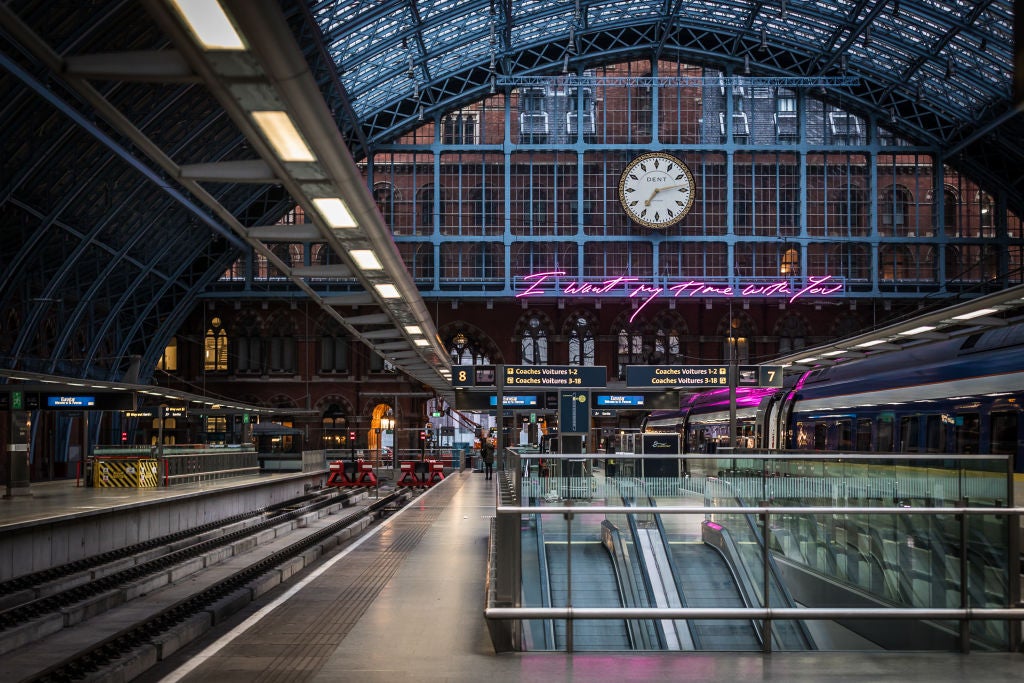High-speed train travel between UK and Europe ‘saves 60,000 flights a year’
‘We are fully committed to expanding international high-speed rail links between the UK and the rest of Europe,’ says transport secretary

Your support helps us to tell the story
From reproductive rights to climate change to Big Tech, The Independent is on the ground when the story is developing. Whether it's investigating the financials of Elon Musk's pro-Trump PAC or producing our latest documentary, 'The A Word', which shines a light on the American women fighting for reproductive rights, we know how important it is to parse out the facts from the messaging.
At such a critical moment in US history, we need reporters on the ground. Your donation allows us to keep sending journalists to speak to both sides of the story.
The Independent is trusted by Americans across the entire political spectrum. And unlike many other quality news outlets, we choose not to lock Americans out of our reporting and analysis with paywalls. We believe quality journalism should be available to everyone, paid for by those who can afford it.
Your support makes all the difference.High-speed train travel between the UK and Europe saves 750,000 tonnes of CO2 per year compared to flying, according to new research.
The report, produced by Steer on behalf of HS1 Ltd, found that current high-speed rail travel use replaces the equivalent of 60,000 flights annually.
HS1, which operates the high-speed railway connecting St Pancras International to the Channel Tunnel through Kent, said it is working with international partners to connect direct services to Bordeaux in France, Frankfurt, Dusseldorf and Cologne in Germany, and Geneva in Switzerland.
Transport Secretary Grant Shapps said: “HS1 is a true success story and we are fully committed to expanding international high-speed rail links between the UK and the rest of Europe as part of our work to be a truly Global Britain.
“This new partnership demonstrates the huge potential of high-speed rail to help the UK reach its net zero carbon emissions target by 2050.”
The research also predicts that once the Eurostar’s routes to Amsterdam and Rotterdam reach their full potential and other international destinations are added to the network, passengers could make up to 4.9 million more international train trips per year.
This would save an additional 470,000 tonnes of CO2e annually – the equivalent of 26,000 short-haul flights. CO2e means carbon dioxide equivalent, and takes into account the warming impact of other greenhouse gases on top of carbon emissions, so it can be expressed as a single number.
Average carbon emissions are 80 per cent lower for train passengers than airline passengers over the same distance.
HS1 also predicts that 200,000 people will use high-speed services between London and Bordeaux each year. The route makes use of a recently opened 302km high-speed line between Bordeaux and Tours, and allows passengers to travel from London to south-west France in under five hours.
“More and more people are switching to rail as the most environmentally friendly way of travelling between the UK and a growing list of destinations in mainland Europe,” said Dyan Crowther, CEO of HS1 Ltd.
“They enjoy international travel without the hassle which is all-too-often associated with airports and make important environmental savings along the way.
“We are a fast, efficient, reliable and green gateway to Europe.”
Join our commenting forum
Join thought-provoking conversations, follow other Independent readers and see their replies
Comments